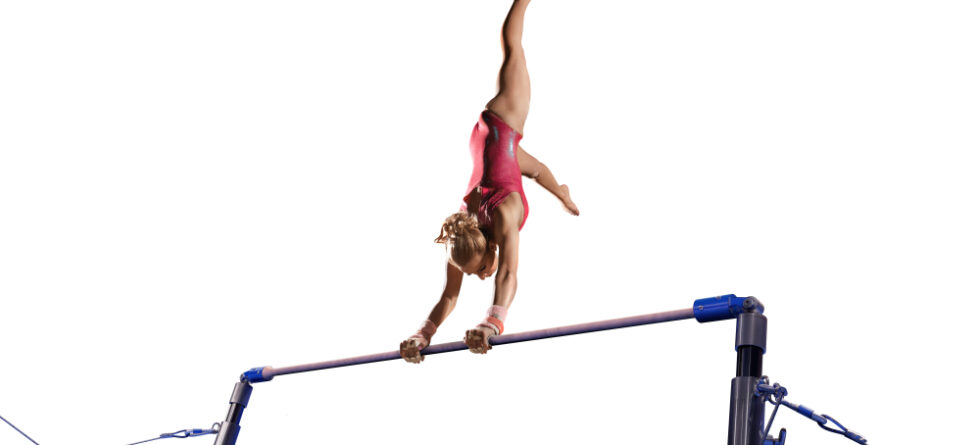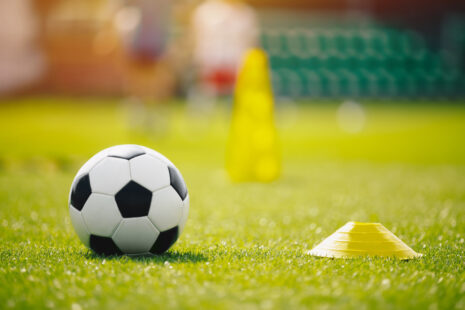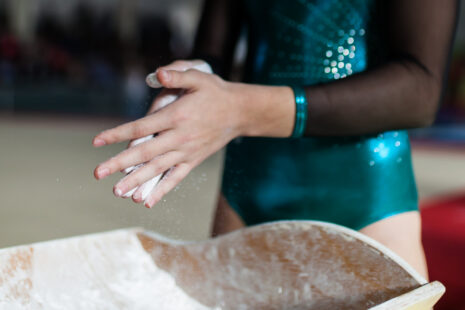Gymnasts get strong through a combination of rigorous training, disciplined diet, and specific exercises that target the whole body, with an emphasis on core strength, flexibility, and balance.
Here’s a closer look at how gymnasts build their remarkable strength…
1. Comprehensive Bodyweight Training
- Gymnastics routines themselves are intensive bodyweight exercises that build strength. Movements like flips, vaults, and balances require and develop significant muscle power.
- Calisthenics, including push-ups, pull-ups, dips, and leg raises, are fundamental to gymnastics training, enhancing upper body and core strength.
2. Core Conditioning
- The core is crucial for stabilizing the body in almost every gymnastics maneuver. Gymnasts perform a variety of core strengthening exercises, such as planks, hollow body holds, and V-ups, which are essential for developing a strong, stable midsection.
3. Flexibility and Mobility Work
- Gymnasts spend a significant amount of time on flexibility and mobility, which allows them to perform high-skill movements without injury. This work, including dynamic and static stretching, also contributes to muscle strength and health.
4. Plyometrics
- Plyometric training helps gymnasts develop explosive strength, improving their ability to perform quick, powerful movements. Exercises like box jumps and bounding are common.
5. Resistance Training
- While bodyweight exercises form the core of their training, gymnasts may also engage in resistance training with weights or resistance bands to target specific muscle groups, increase strength, and improve muscle endurance.
6. Isometric Exercises
- Gymnasts frequently perform isometric exercises, where the muscle length doesn’t change during contraction. Holds and supports on the rings, pommel horse, or bars require and build tremendous strength through isometric contraction.
7. Balance and Proprioception Training
- Training that improves balance and spatial awareness also enhances muscle coordination and strength. Balance beams, uneven bars, and other apparatus require gymnasts to constantly adjust their movements, engaging a wide array of muscles.
8. Nutrition and Recovery
- A disciplined approach to nutrition, focusing on a balanced intake of proteins, carbohydrates, fats, and sufficient calories, supports muscle growth and recovery.
- Adequate rest and recovery practices, including sleep and active recovery techniques, are essential for muscle repair and growth.
9. Cross-Training
- Many gymnasts incorporate other forms of physical activity into their training regimen to improve overall strength and performance. This might include activities like swimming, dance, or martial arts.
10. Mental Strength
- The determination and mental toughness required to push through challenging workouts contribute significantly to a gymnast’s ability to train hard and improve strength continuously.
Gymnasts’ strength comes from their comprehensive and well-rounded training regimen that focuses not only on building muscle but also on enhancing flexibility, balance, and coordination. This approach results in a unique blend of power, agility, and grace, enabling gymnasts to perform their complex routines.




